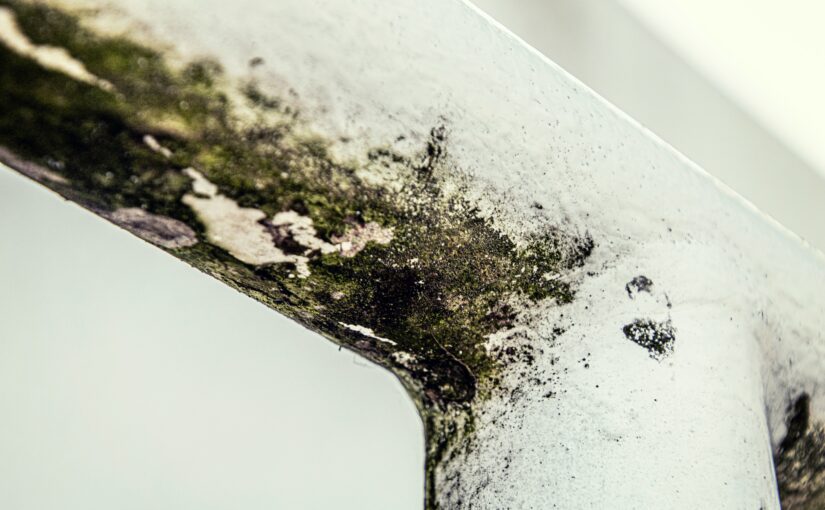Humidity in the home is the amount of water vapor in the air. The higher the humidity, the more moisture there is in the air.
Humidity can be a big problem for your home and your health. It can cause mould, mildew, silver fish and dust mites to grow in your home, which can lead to all sorts of health problems like allergies and asthma. Especially older cheaper houses come with this problem, therefore it is important to know how to battle it.
Household Humidity and its Health Hazards
Air quality is a significant issue in many parts of the world. Air pollution can be caused by a variety of factors, including dust, smoke, and chemicals. One of the most common air pollutants is particulate matter – tiny particles that are released into the air and can cause respiratory problems.
Household humidity is also an important factor to consider when it comes to air quality. The level of humidity in your home can affect how comfortable you feel, as well as how much time you spend indoors or outdoors. Too much humidity can lead to mould growth and other health hazards that are not ideal for your family’s health or comfort.
What Causes High Humidity in Homes?
Moisture in the home can come from a number of sources. One of the most common sources is improper heating. When you do not run your heat enough, or if you have a drafty area in your home, the moisture will be drawn into the house and condense on cooler surfaces like windows or walls. This is one of the reasons why you might notice high humidity levels in your home during winter months.
Cause Humidity Problems – Condensation
Condensation is the process of water vapor in the air becoming liquid water droplets. This process happens when a humid region of air comes into contact with a surface that is colder than the dew point temperature.
It can cause problems to your home such as mould, mildew, and rot. It also causes other humidity problems as it can lead to condensation on windows and walls.
Cause Humidity Problems – Capillarity
How does capillarity happen? It happens because of atmospheric pressure. Air pressure is greater near the ground than it is higher up in the atmosphere. When this difference occurs, it causes water to rise up from the ground and appear on surfaces such as walls.
Cause Humidity Problems – Water Infiltration
Water infiltration is a common and serious problem for homeowners. In order to prevent this issue, it is important to take precautions like installing weather-stripping or caulking around windows and doors. Also, maintenance, such as regularly cleaning rain pipes or checking the roof for possible leaks is advised. If you notice that your home has water infiltration problems, contact a professional immediately.
Solutions for Fighting the High Humidity Battle at Home
Humidity is a natural part of the environment that we can’t do anything about. But when it becomes too much, it can be a serious problem.
The air in your home is often more humid than the air outside, which means that humidity levels are usually higher inside than outside.
There are many solutions for fighting the high humidity battle at home. First it is important to identify the cause, only then you will be able to find the right solution.
Fight Condensation
The right heating habits and to air your home regularly are key to solve this issue. Usually, it is recommended to ventilate your home for at least 20 minutes per day. This can be for example 10 minutes in the morning and 10 minutes in the evening. The best would be to open all windows at the same time, like this the air in the house is replaced quickly by drier air from the outside. You can also install a dehumidifier to remove excess moisture from the air.
Additionally, installing an air purifier to remove any allergens from the air in your home might prove beneficial.
Fight Capillarity
There are various ways to stop capillarity in your home. One way is by applying a sealant to your drywall. Another way is by adding moisture barriers to the exterior of your home and installing insulation in your basement. But if you don’t want to do any of these, the best way to stop your capillarity problem is by professional installation of a moisture barrier.
Fight Water Infiltration
The first step is to make sure your roof is in good condition and not leaking. If you notice any leaks from the roof, have them repaired as soon as possible. You should also make sure your gutters are clear and not clogged with debris or leaves that could block the water flow from your roof and lead to leaks in your home.
You should also inspect the exterior of your home for any cracks or openings where water could enter. For example, if there’s an opening around a pipe on the outside of your home, this could allow water to seep in through these cracks or openings and into your house.
Conclusion
Humidity is a major concern in the home. It can cause mould and mildew to grow on surfaces.
– Make sure that your house is properly ventilated for at least 20 minutes per day. This will help prevent moisture from building up indoors.
– Use a dehumidifier when needed to control humidity levels in your home, especially during humid seasons or if you live in a humid environment.
